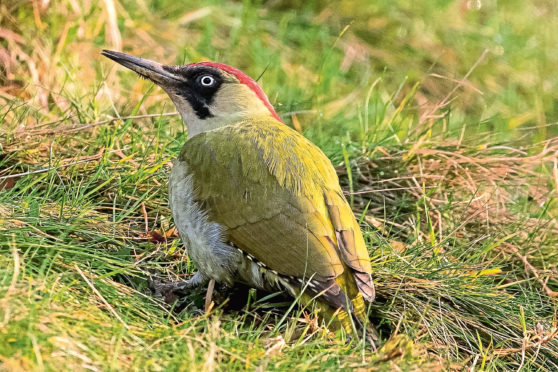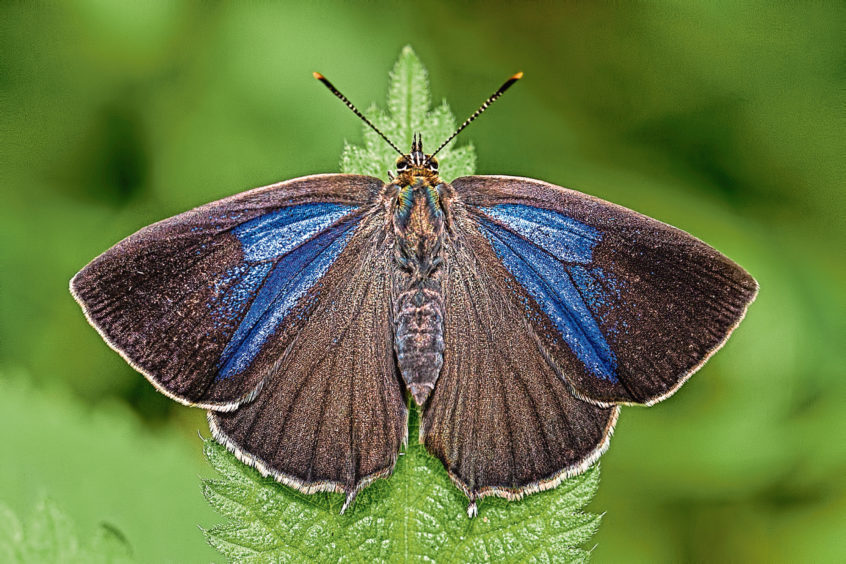A light pale fluttering of under-wings in the oak canopy above me – a small butterfly, but of a type unknown to me, flying purposefully through the branches, turning for a moment to reveal darker top-wings before disappearing into the foliage.
What could it be? I certainly needed to do a bit of research when I got home, but the butterfly mystery was momentarily offset by the distraction of ringing yodel that carried across the trees here in Dollar Glen by the foot of the Ochils.
It was a green woodpecker and that call is surely the furthest reaching of any Scottish bird, having a certain pitch and strength of delivery that pierces the air like a dagger. I couldn’t see the bird because of the dense greenery, which was a shame because these woodpeckers are stunning birds with their bright green body plumage and scarlet head-cap.
Despite being a woodpecker, they spend a considerable amount of time on the ground in open areas, feeding on ants in particular. The steep scarp of the Ochils is perfect for them, thanks to its mix of trees and open ground where the sun-catching southerly aspect allows insects to thrive.
I stop for a while by a deep, moss-covered cleft at the bottom of the glen. It was just like being in a temperate rainforest; a moisture laden environment rich in ferns, mosses and liverworts.
Here, I find the strange shiny and elongated leaves of hart’s-tongue fern, while the frilly fronds of hard shield ferns decorate the mossy trunks of some of the trees. Down by a ledge close to the tumbling burn, the rocky sides are covered in a creeping mat of liverworts, simple plants that thrive in the humidity and shade.
Like many other Ochil glens, the deeply incised south-facing Dollar Glen, with its gorges and steep flanks, is well protected from prevailing westerlies and cold easterlies, and as such, features a mild and moist micro-climate where specialised plants prosper.
But what about that butterfly? Well, it turned out to be a purple hairstreak; a most unusual butterfly that lives in the canopy of oakwoods. Their habit of living high in the trees means they are easily missed, making it hard to appreciate their attractive deep purple upper-wing patterning.
The caterpillars feed exclusively on oak leaves, but even more peculiarly, the adults gain their nourishment from honeydew made by aphids, rather than supping flower nectar as is the case with most butterflies.
This purple hairstreak was a new one for me and a most satisfying discovery. Our tree canopies are such important habitats, easily overlooked because of their inaccessibility. A single oak can harbour hundreds of different insect species, plus a host of other invertebrates, along with mosses and lichens.
Thus, each tree in this little Ochil glen is like a little world in its own right, a special place teeming with life and where undiscovered natural secrets still lie hidden within their green embrace.
Info
The wildlife habitats and geology of Dollar Glen have made it a Site of Special Scientific Interest, with it being a nationally important location for lichens and ferns.











